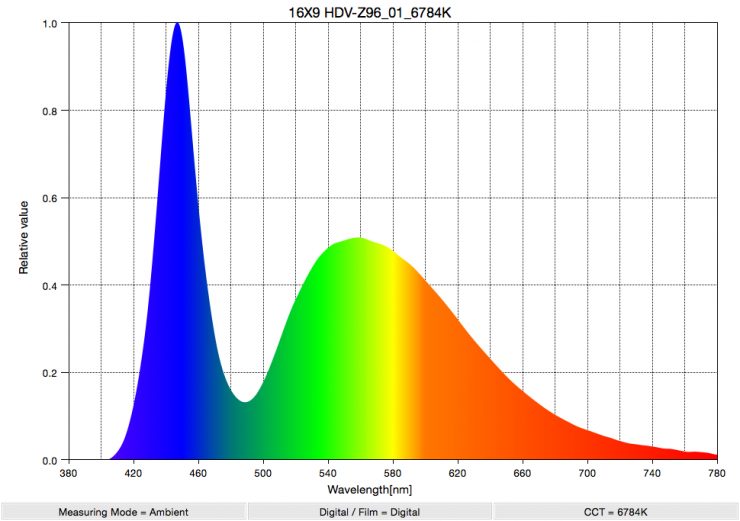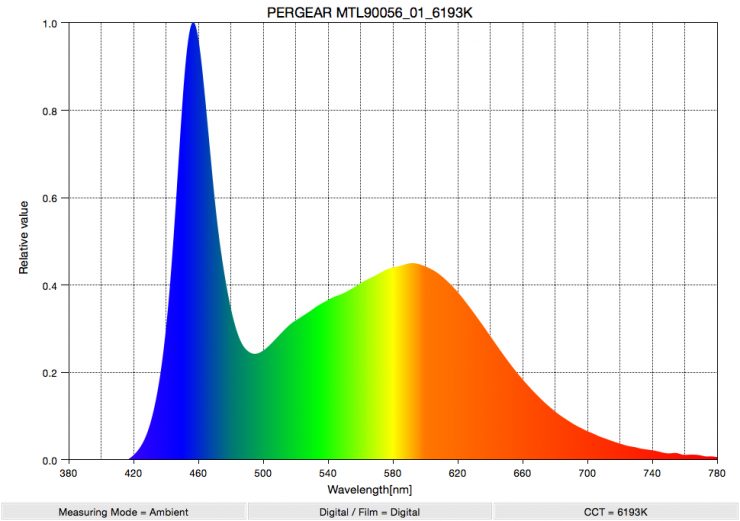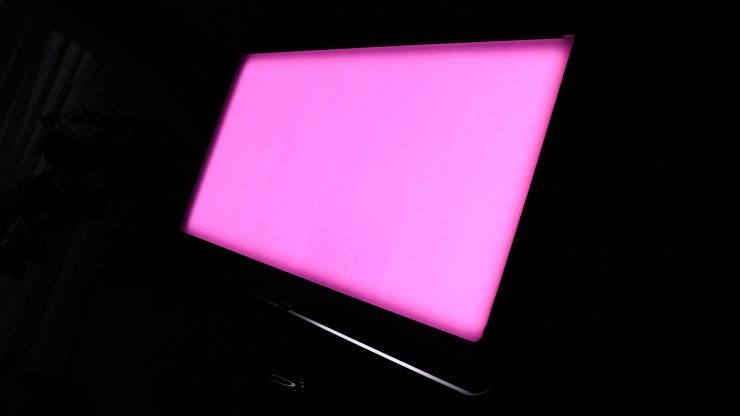
I often hear people complaining that this light is green, or this light produces a color cast. While LED lights in the early days were all over the place when it came to quality and color reproduction they have gotten a lot better in recent years.
So why do we still see discrepancies between LED lights and how can we check to see if they work well together?
Don’t mix & match lights unless you know what you are doing
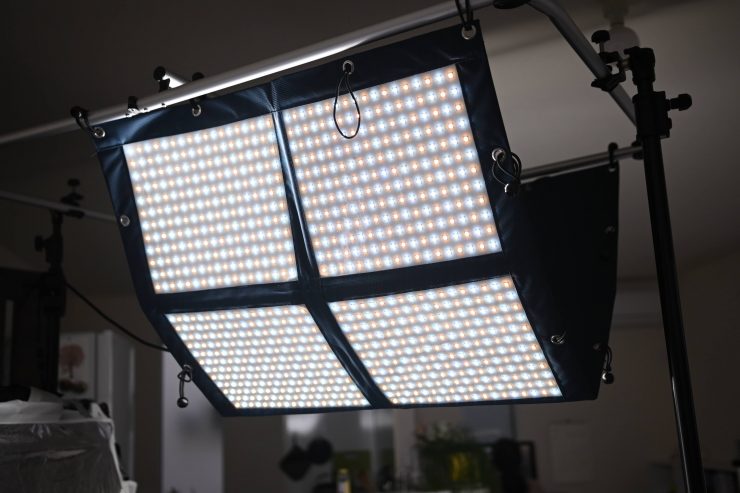
One of the main reasons for color casts is that a lot of people are using lights from different manufacturers that don’t play well together. Unless you have a Sekonic Spectromaster C-800 that can measure SSI you shouldn’t be mixing and matching lights from different manufactures. With CMOS sensor cameras you are literally playing Russian roulette when mixing LED lights.
Here is an example: You have a key light from manufacturer X and you are using it as your main key or source light. For your backlight, you are using a different fixture from manufacturer Y. You do a white balance for light X and then you wonder why light Y looks green or has a magenta cast. Here lays the problem. Once you balance for light X, you are balancing your camera for that particular lights spectral response. Once you do that, you are going to effectively change the color from light Y. It isn’t that light Y is necessarily bad or has a color cast. Light Y hasn’t changed. What has changed is the way your camera now sees light Y.
What is wrong with LED lights?
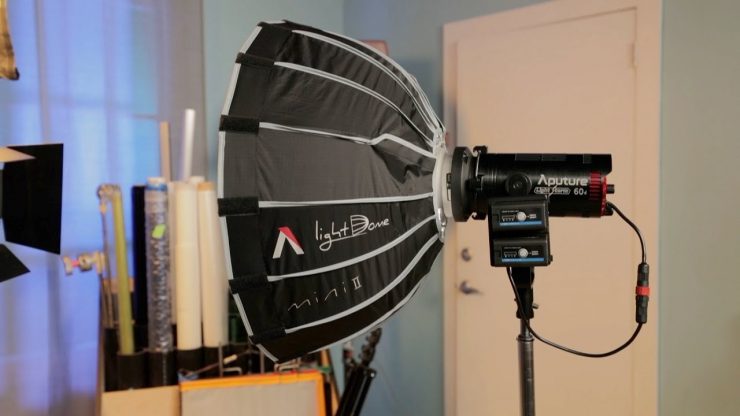
LED lights can be a real catch-22. On one hand, they are great, because they don’t draw much power, they can be single color, bi-color, color adjustable, or full RGB/RGBWW/RGBWAW. This is something you can’t do with traditional tungsten or daylight bulb solutions.
The big caveat sandwich is LED lights are not full-spectrum lights. They can’t reproduce certain colors in the spectrum and they tend to have color spikes in the spectrum that they can produce.
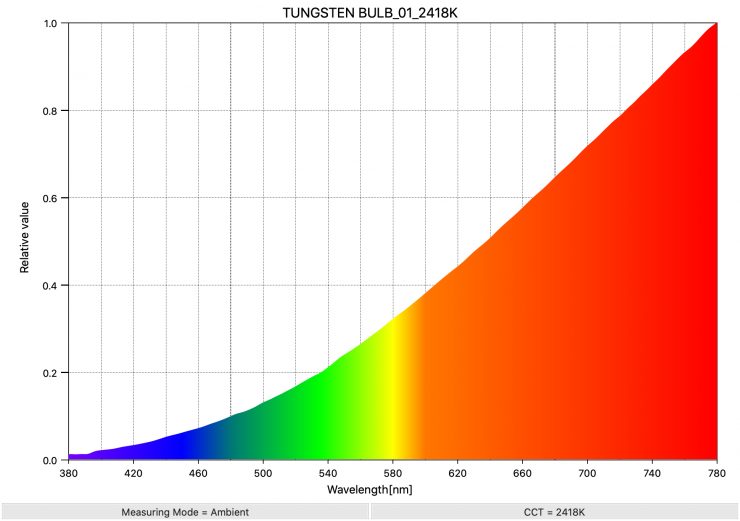
Tungsten bulb 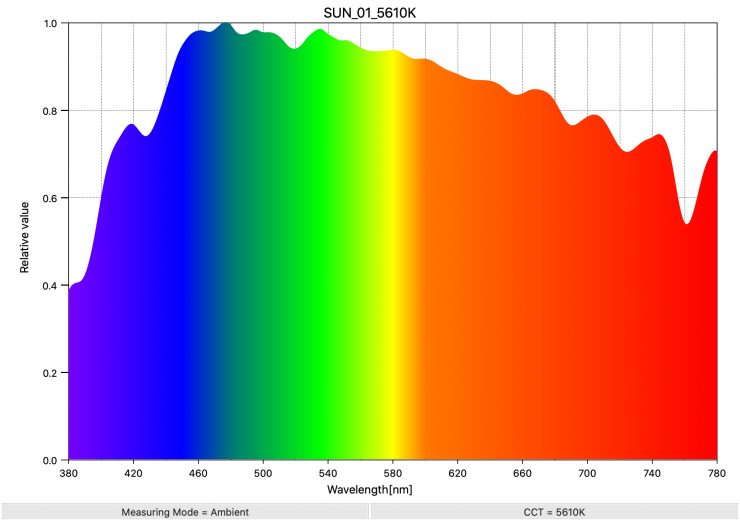
The sun
Above are the spectral responses for a tungsten bulb and the greatest light in the world, the sun.
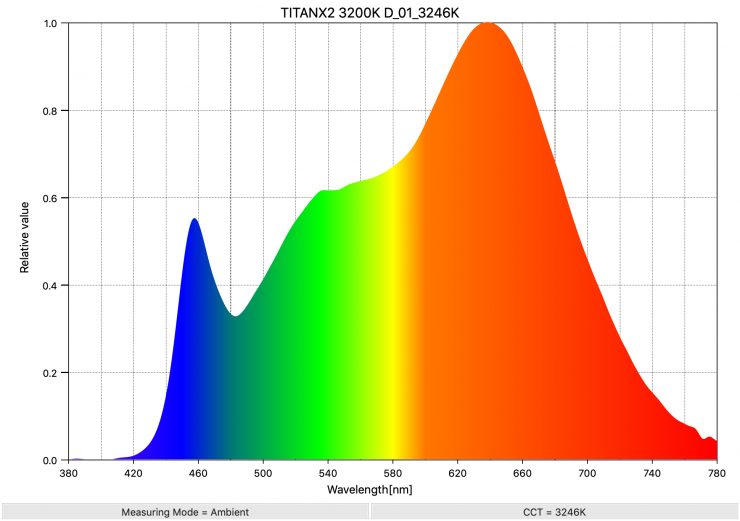
Rotolight Titan X2 3200K 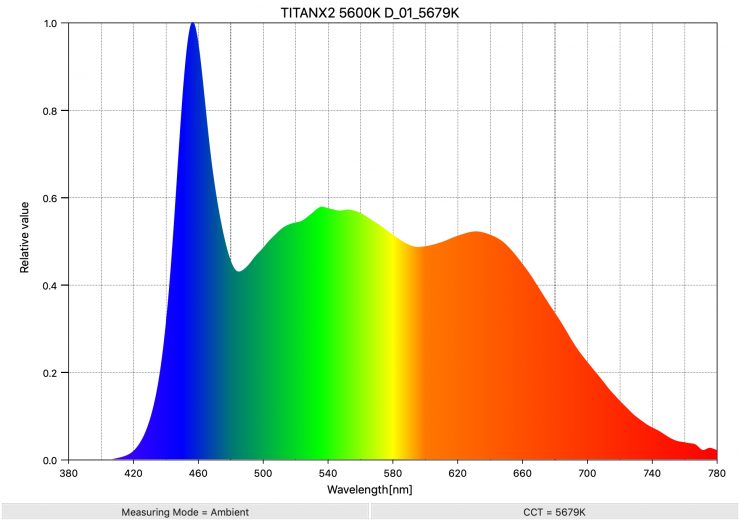
Rotolight Titan X2 5600K
Now let’s look at the spectral response of a very good LED light, the Rotolight Titan X2 at 3200K and 5600K. Look at how much information is missing in the spectrum. You can clearly see why LED lights struggle to reproduce red very well. LED lights are very good at producing blue in the 440-480 part of the spectrum.
If we look at some cheap LED lights, you can see how much of the spectrum is missing. While the spectral response is quite smooth, these light can’t replicate the colors that are required to produce nice skin tones.
CRI & TLCI
Lighting standards are all over the place. CRI and TLCI scores do let us compare one light to another, but they don’t tell you anything about how lights compare to an ideal light source or how various lights play together.
You will often see companies quoting CRI and TLCI scores on their websites. These numbers always sound impressive, but in reality, almost every light you can buy these days will have a CRI score in the 90s. If a 5600K LED light has a CRI score of 97.6 and the sun has a CRI score of 99.2, you are probably going to just assume that your light will be fantastic at reproducing a daylight source. As the saying goes, assumptions are the mother of all …….
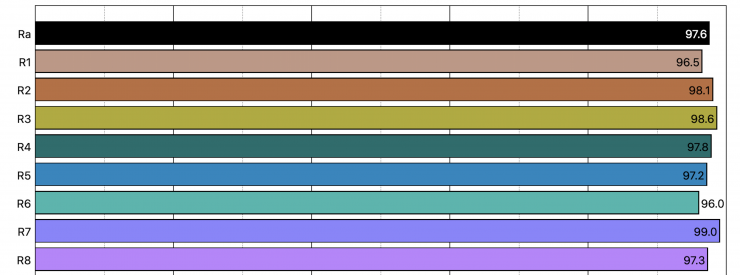
CRI is misleading. CRI only measures R1-R8. Above you can see the colors that makeup R1-R8. R1-R8 scores are always high on every light. The problem is the CRI number being quoted by the manufacturer doesn’t include any of the colors that are important for replicating accurate skin tones.
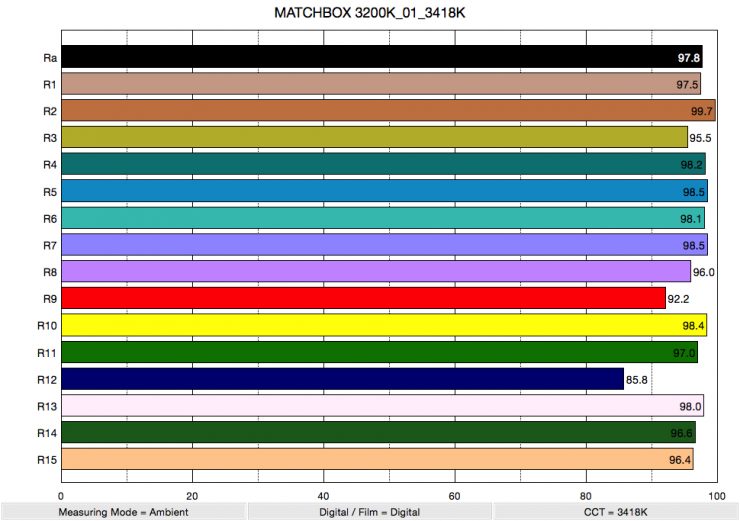
Extended CRI is the measurement of R1-R15. This is a much broader range of colors and includes R9 (red), R13 (closest to caucasian skin tones, and R15 (closest to Asian skin tones). The extended CRI score is the average of R1-R15. Saturated red light is the hardest hue for an LED light to create, and yet it is so important when it comes to replicating good skin tones. This is why it is imperative that the score for R9 (red) be as high as possible.
Here is a tip for you, if you are looking for a LED good light that will replicate skin tones nicely, look and see what the score is for R9 (red). If this is in the 90s it is going to produce nice-looking skin tones. Steer clear of lights that have poor scores for R9 (red).
Extended CRI figures are a much better indicator than CRI, but they are still not the best way to judge LED lights.
Manufacturers don’t want to give you the Extended CRI figure because it is always lower than the CRI (R1-R8) score that they publish.
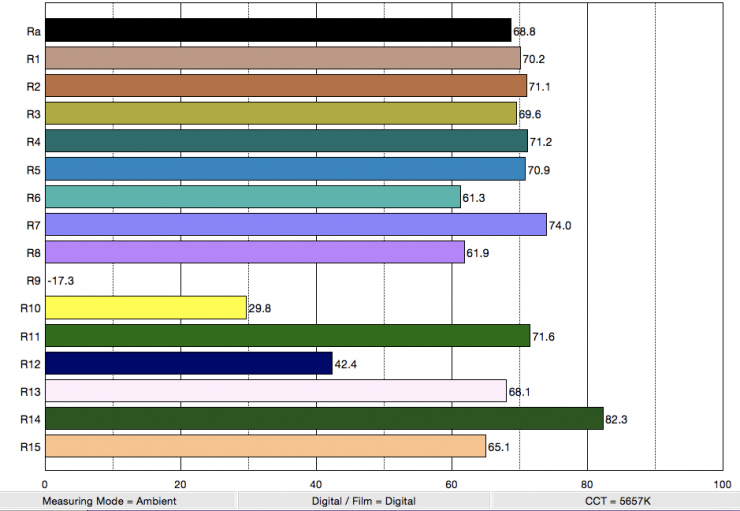
Even good or bad CRI or Extended CRI scores can be slightly misleading. Above is a light that has horrible CRI scores, but this actual light is used extensively in the broadcast industry and nobody complains. I actually owned and used this light for many years. Not only are the CRI and Extended CRI scores very low, but look at the score for R9 (red). It is actually -17.3! This light is so bad at replicating red that you wouldn’t want to use it if you are looking for good skin tone reproduction.
This is why you can’t read too much into CRI scores. Scores don’t always tell you the full story. Based on the above results, you wouldn’t expect anyone to be using that light, but people do. The reason is, a lot of people using this particular light were using broadcast-style cameras with 3CCD sensors. With these types of cameras, the lack of red didn’t make any huge discernible difference, but if you use them with a camera that has a CMOS sensor, this light looks horrible.
So what about TLCI scores? TLCI (Television Lighting Consistency Index) takes a measurement of the spectral power distribution of a luminaire, using a spectroradiometer. It then analyses the performance of the luminaire in the context of television. It awards a single number value to the luminaire, on a scale from 0 to 100. The significance of the numbering is the same as the CRI, but with important differences. Unlike the CRI, where a score of greater than 90 is widely regarded as the minimum for television use, the TLCI-2012 scores are more spread out:
- 85 to 100: errors are so small that a colorist would not consider correcting them
- 75 to 80: a colorist would probably want to correct the color performance, but could easily get an acceptable result
- 50 to 75: a colorist would certainly want to correct the errors, and could probably achieve an acceptable result, but it would take significant time to get there
- 25 to 50: the color rendering is poor, and a good colorist would be needed to improve it, but the results would not be to broadcast standard
- 0 to 25: the color rendering is bad, and a colorist would struggle for a long time to improve it, and even then the results may not be acceptable for broadcast
The big problem with TLCI is it is a broadcast standard and it is was designed for use with 3CCD sensor cameras. It was not designed with CMOS sensor cameras in mind. These two types of sensors have vastly different ways of seeing color. Because most modern cameras use Bayer pattern sensors they have a tendency to react badly to lights that have a green spike. Cameras with a 3CCD sensor don’t tend to see these green spikes from LED lights.
Just to show you how different the color responses are from CCD and CMOS sensors are I decided to do a little test. In this test, I was using an LED light at a 5600K Kelvin color temperature. I then recorded a color checker chart with an ARRI AMIRA set at a 5600K preset WB and a Sony F35 with a 5600K preset WB. I then proceeded to dial in more green on the light to see how the two cameras reacted. Above you can see that test.
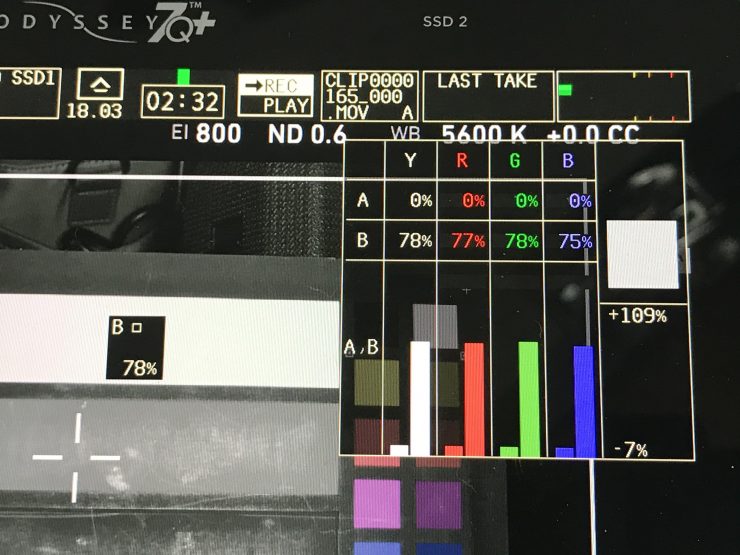
ARRI Amira – light at 5600K 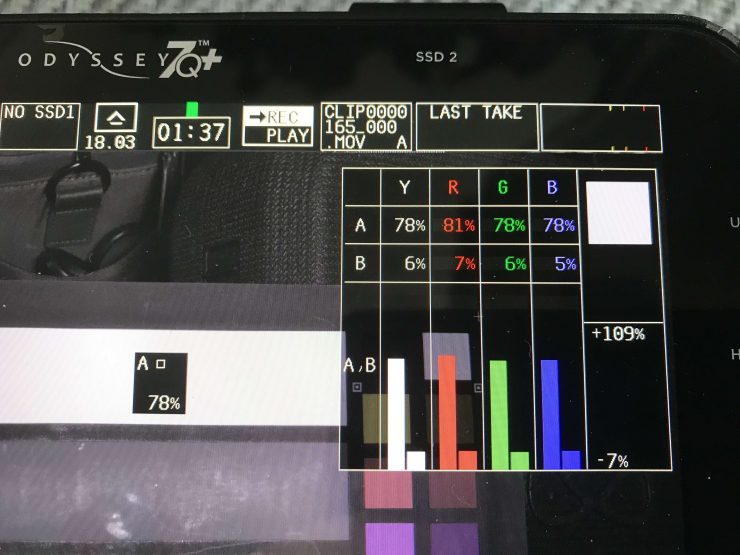
Sony F35- light at 5600K
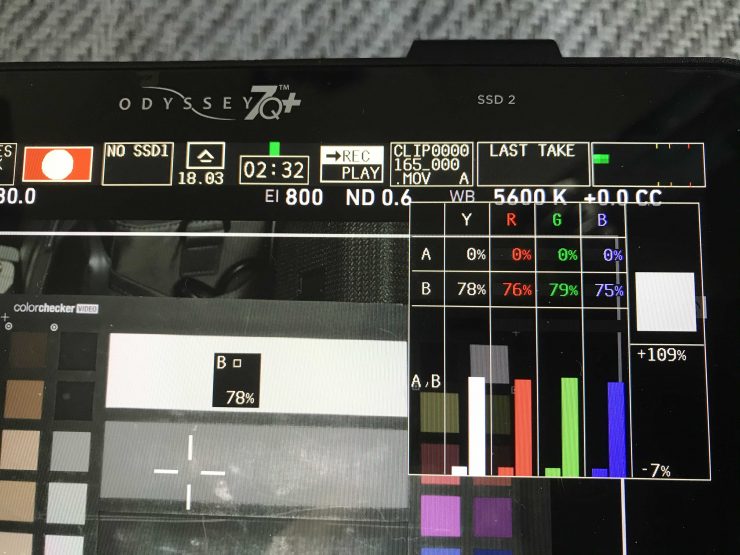
ARRI AMIRA- light at 5600K 15% green offset 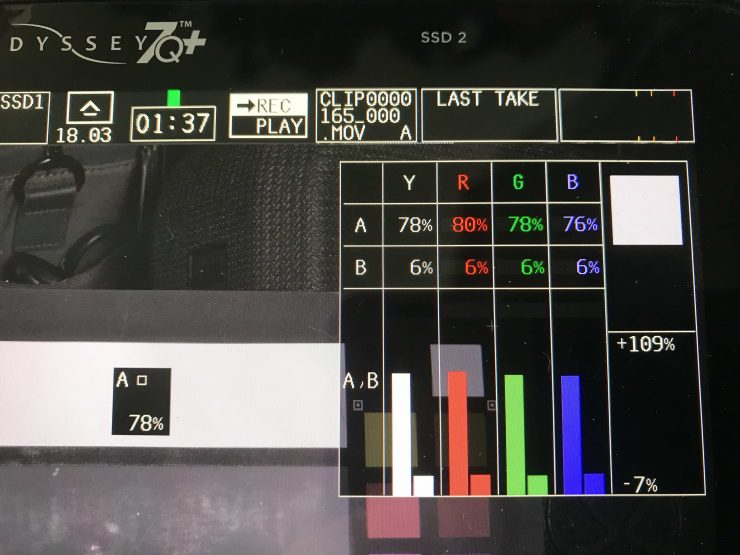
Sony F35- light at 5600K 15% green offset
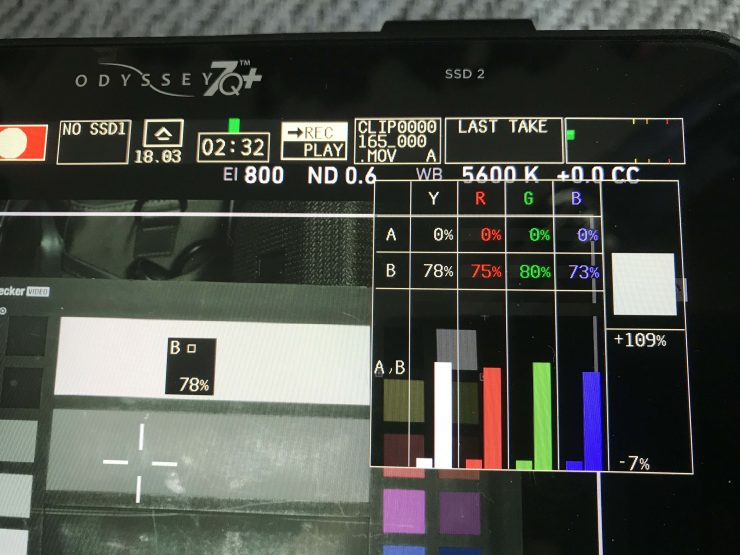
ARRI AMIRA- Light at 5600K 50% green offset 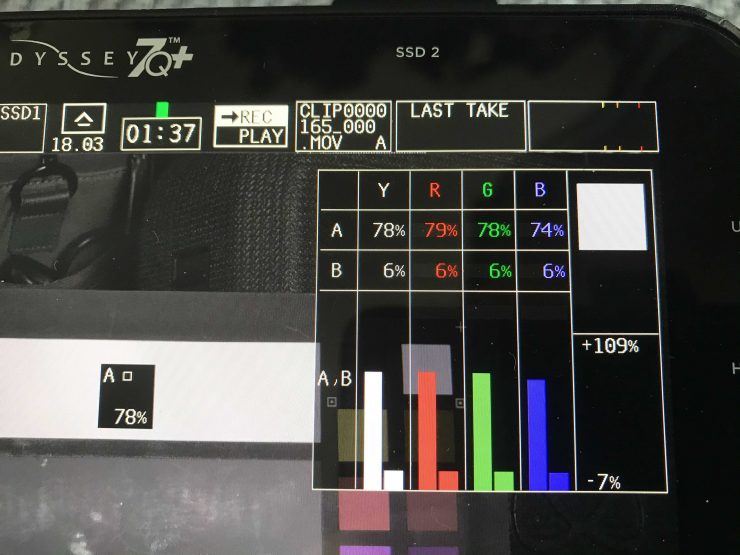
Sony F35- Light at 5600K 50% green offset
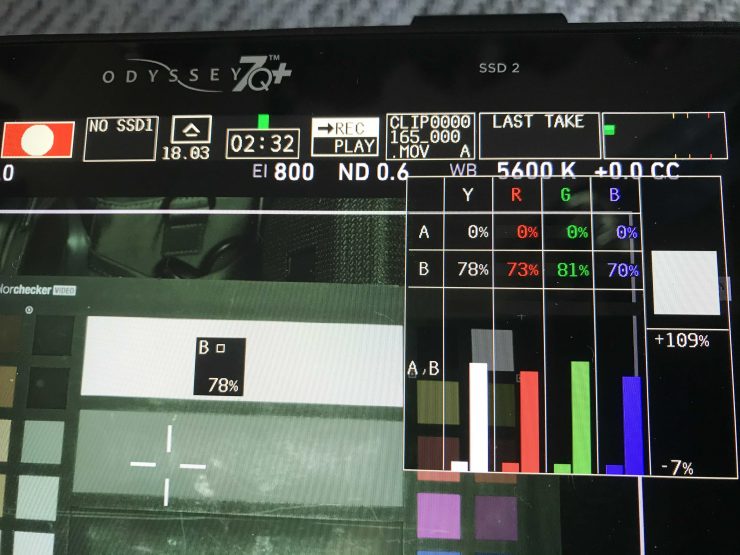
ARRI AMIRA- Light at 5600K 100% green offset 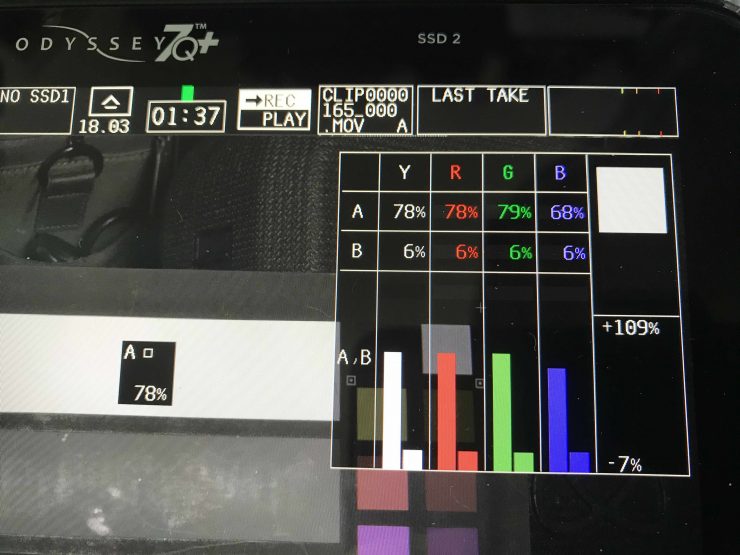
Sony F35- Light set at 5600K 100% green offset
Above you can also see the RGBY spot values for white on a color checker chart from both cameras. You can clearly see that the CCD sensor on the F35 doesn’t react to green changes nearly as much as the CMOS sensor on the ARRI AMIRA. The F35 is able to keep information in the red channel, whereas the ARRI is losing information in the red channel and gaining information in the green channel.
When a 100% green offset is added to the light, on the F35 the difference between the red and the green channels is just 1%. On the ARRI there is an 8% difference. On the ARRI the green channel is also increasing from 78%-81%. On the F35 it only moves from 78% to 79%.
With modern-day grading and color correction tools like Resolve, you can easily fix both the F35 and ARRI images where the light was set at 5600K and a 100% green offset was used. The thing is, you don’ want to have to fix these issues in post.
I got off track a little bit, but now let’s get back to TLCI. TLCI is based around results that are captured when using a 24-color Macbeth Colorchecker chart. This chart was first made in 1976! The chart’s 24-color patches have spectral reflectances intended to mimic those of natural objects such as human skin, foliage, and flowers, that have a consistent color appearance under a variety of lighting conditions.
When dealing with TLCI, software uses the spectral data to compute the Correlated Colour Temperature (CCT) of the light source under test and then the reproduced color coordinates of a known test chart. Differences in the reproduced colors are used to compute a single number on a scale from 0 to 100. A value of 100 indicates that the light source under test is identical to a CIE reference light source having the same CCT as the source under test.
With most modern day lights, they all score well in TLCI tests. I still conduct TLCI tests as it gives me a reference where I can then compare previous lights I have tested, but I personally don’t place a lot of weight in these scores.
What is SSI and why is it important?
SSI (Spectral Similarity Index) was developed by the Sci-Tech Council of the Academy. SSI gives you the ability to set any light as a standard, or use predefined standards (such as CIE D55), and then give other lights an SSI score based upon how well they will match standards such as CIE D55. This way you can measure spectral response and compare it directly against an ideal light source.
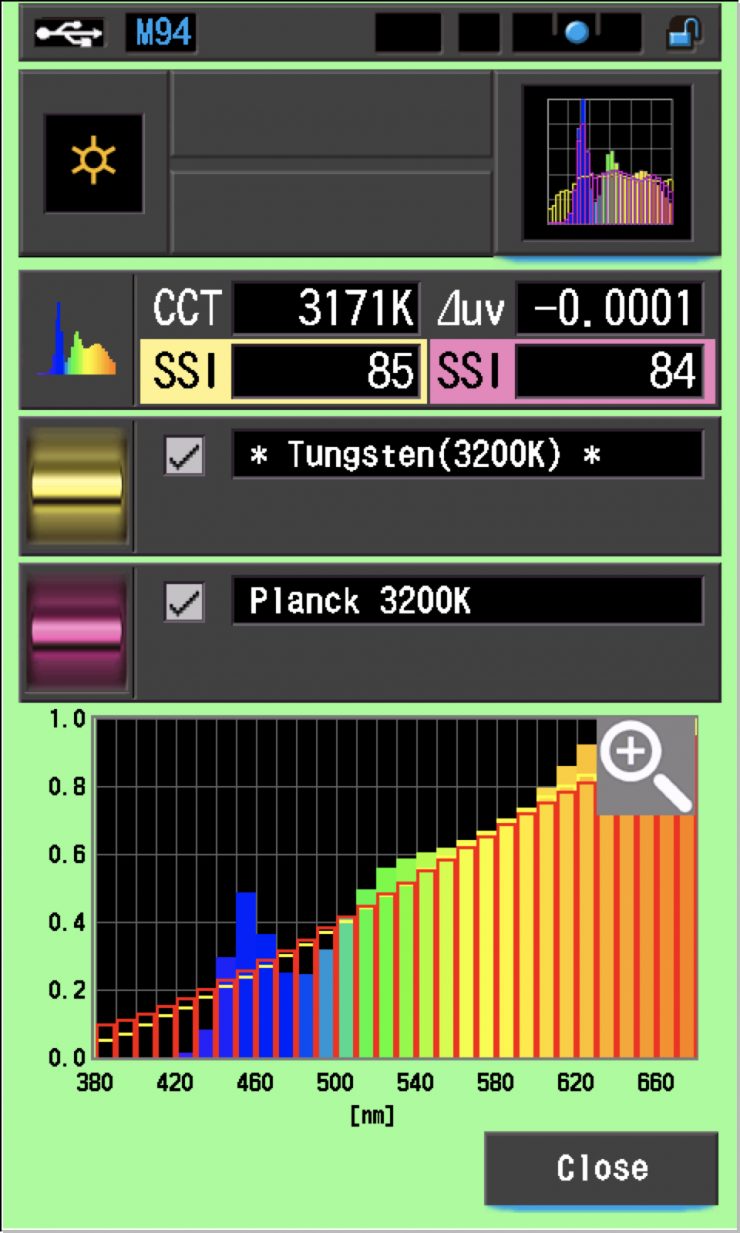
As an example, above you can see how well the Luxli Taiko compares to ideal 3200K sources. This is an excellent light and theses scores are very high compared to a lot of other LED lights, but it is still only a score in the 80s. No manufacturer wants to publish a figure that says my light scored 80/100 when they can publish a TLCI figure that says 97.
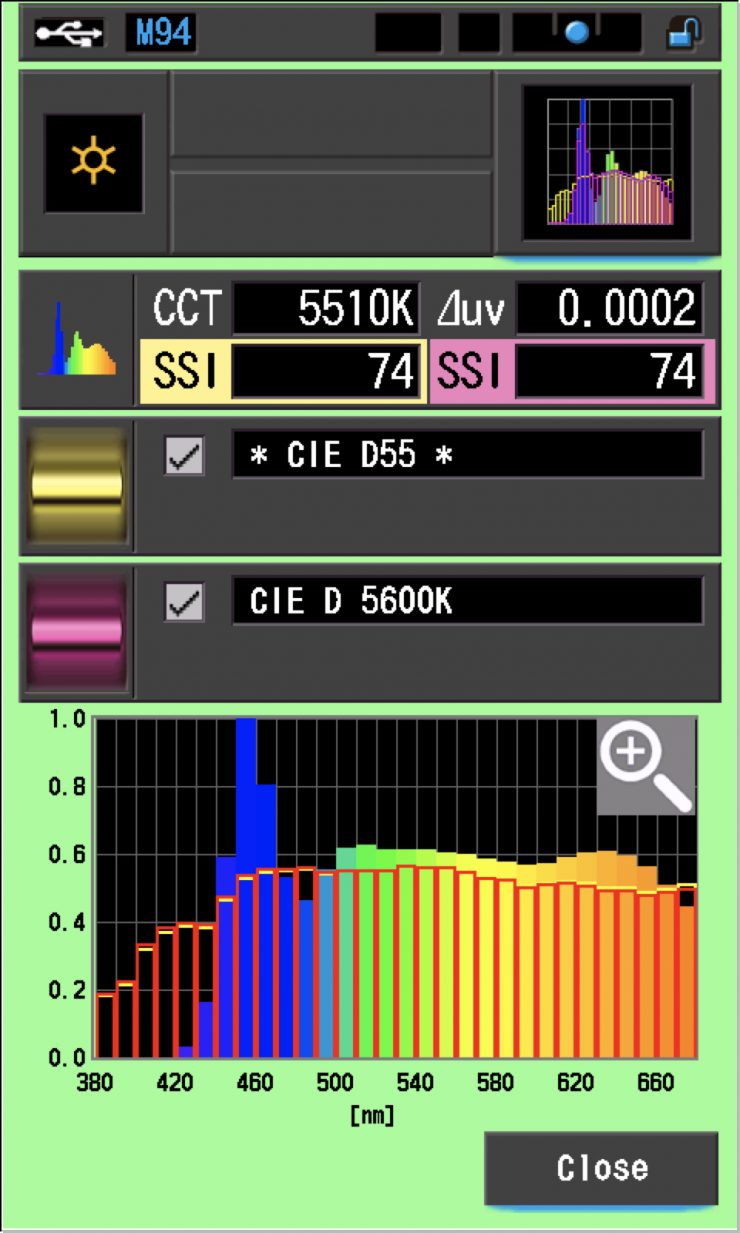
Now, if we look at how that same LED light compares against a perfect 5600K lighting source, things look even worse. Even a good LED like this one only scores 74 when you compare it to a perfect daylight source.
SSI is a very good way of accurately comparing LED lights against perfect lighting sources.
More importantly, SSI lets you compare lights to see how well they match and if they will work well together.
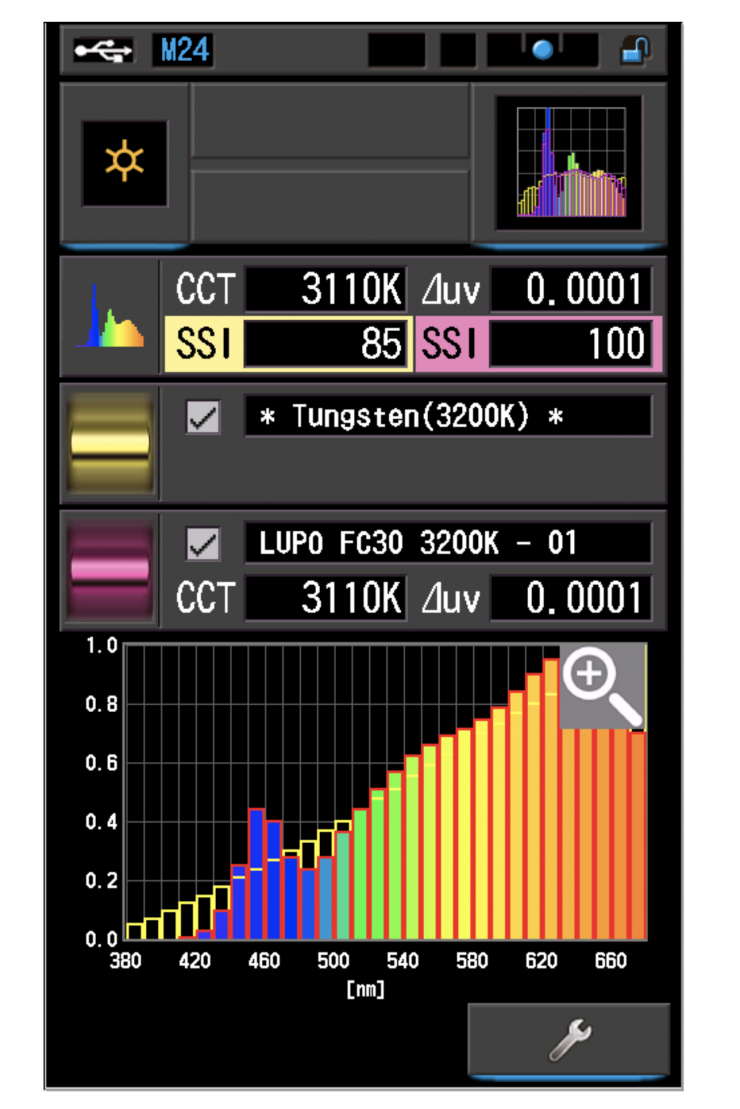
Lights from the same manufacturer tend to match a lot better than when you are using lights from different manufacturers together. Above you can see that the Lupo Superpanel Dual Color 60 is a perfect match to the Lupo Superpanel Full Color 30 when both are set at 3200K. This means you could use both lights together and they would produce identical light.
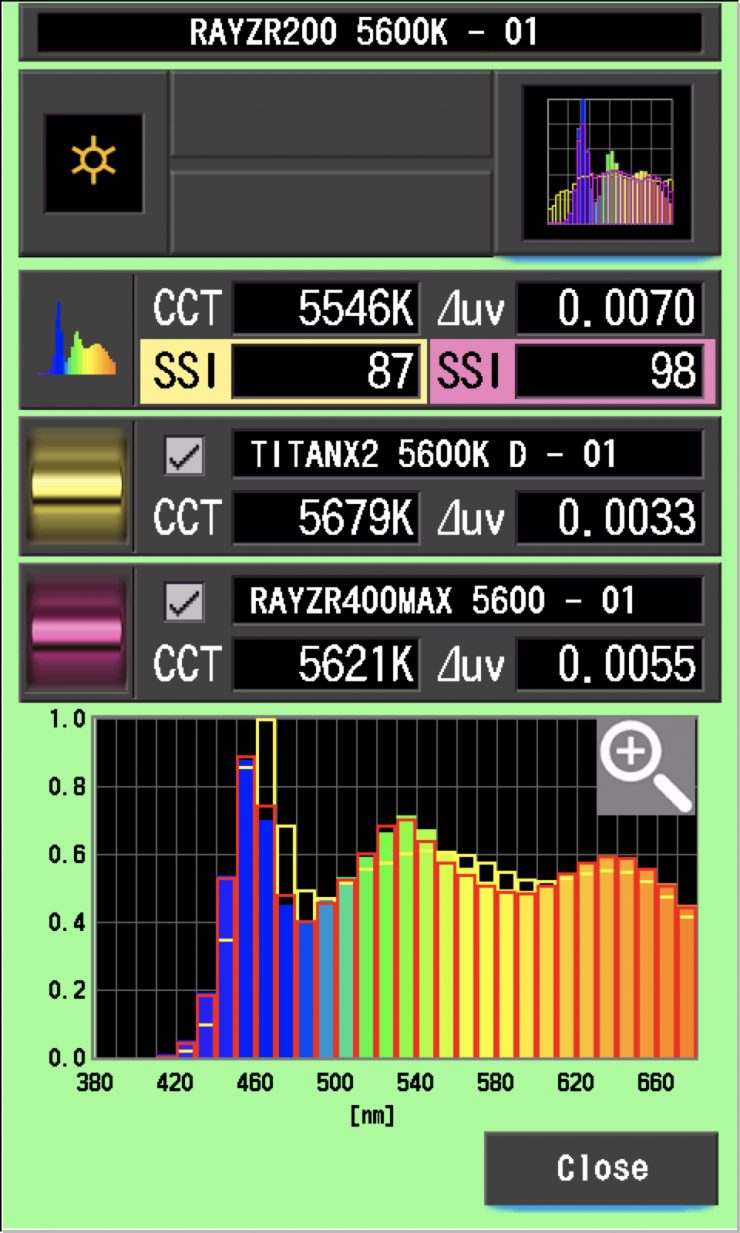
As another example, you can see that the Rayzr MC400 MAX is almost a perfect match with the Rayzr MC200 when used at 5600K, but you can also see that it is not a perfect match if you wanted to use it alongside the Rotolight Titan X2. While a match of 87 is not bad, I probably wouldn’t want to use any lights together that don’t have a matching score that is at least in the mid 90s.
It is also important to note that just because you are using lights from the same manufacturer, it doesn’t necessarily mean that they will match either. You need to do your homework.
So what is the solution?
SSI is definitely a step in the right direction. Manufacturers such as Kino Flo and Rotolight are also making lights where you can tell the fixture what camera sensor you are using and it will tune the light to match that particular sensor. LED lights have come a long way, but they are never going to be able to replicate perfect tungsten or daylight sources. They just simply can’t reproduce the spectrum of colors that is needed.
I think the best we can hope for with LED lights is that more manufacturers come up with systems that allow the light to be optimized to work with particular camera sensors. If only we could have a universal system where you could grab any light and then set that light to replicate the best possible colors that match the camera you are using. Lighting companies could also conduct tests and provide data about what are lights match their fixtures, but they will never do that for obvious reasons.
We don’t work in perfect environments and often you will be in environments where you need to use LED lights, but you have no control of other light that is in that environment. However, it helps if you know what the temperature and color cast of those other lights are so you make an accurate assessment of how to light your scene to obtain the best results.
Having a Spectrometer is a good way of helping you tune the lights you have (as long as you can tune those lights!) so that they play better together. You are never going to get certain lights to match no matter what you do, but by making adjustments you can get them to look a lot more similar. Even if your lights can’t be adjusted, you could use traditional gels and a Spectrometer to see exactly what those gels are doing.
My current advice is to stick with the same brand of lights if you are using multiple fixtures. Even if you can’t measure SSI, there is a very good chance that lights from the same manufacturer are going to match really well. Once you start mixing lighting sources from different manufacturers you are going to see color discrepancies.
You need to think of LED lights in the same way you would think of cameras. Different cameras don’t often play well together and this is exactly the same with LED lights.
Like what we do and want to support Newsshooter? Consider becoming a Patreon supporter and help us to continue being the best source of news and reviews for professional tools for the independent filmmaker.

